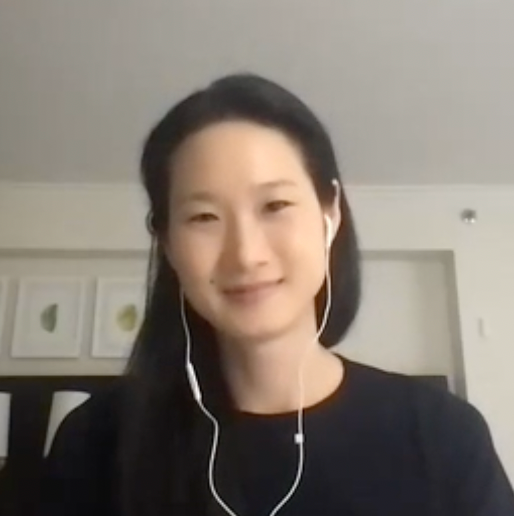Article
Secukinumab Significantly Improves Hindradenitis Suppurativa Regardless of Demographics
Author(s):
A post hoc analysis of phase 3 adds support to the IL-17A inhibitor for the potential treatment of HS.
Jennifer Hsiao, MD

Secukinumab (Cosentyx) provided significant improvements to abscess and inflammatory nodule (AN) counts in patients with hidradenitis suppurativa (HS) treated over 16 weeks, according to new data.1
In a pooled subgroup analysis from the phase 3 SUNSHINE and SUNRISE trials, presented at the Maui Derm 2023 NP + PA Summer Conference in Colorado Springs this week, a multinational team of investigators funded by Novartis reported significant benefit to AN reduction in patients with HS regardless of age, race, and sex demographics when treated with 300 mg secukinumab over a 16-week regimen.
The data adds to the clinical support of the interleukin 17A (IL-17A) inhibitor, as Novartis continues the development of dermatologic drug for potential US Food and Drug Administration (FDA) approval to treat HS. There are currently no drugs indicated by the agency to treat the chronic, burdensome skin condition—yet secukinumab and IL-17A inhibitors among a few drug classes in late-stage development to become so.
In a recent interview with HCPLive, trial investigator Jennifer Hsiao, MD, clinical associate professor of dermatology at Keck School of Medicine of USC, said the hope is for secukinumab and other agents to become long-term therapeutic offerings to patients with HS—replacing “short-term Band-Aids” currently in use.
“I think in general, the paradigm is hopefully shifting for patients with moderate to severe HS away from doing repeated courses of oral antibiotics, repeated incisions and drainages of their lesions,” Hsiao said. “Based on a patient’s comorbidities, based on their preferences, I think that really helps guide us in terms of where the IL-17 inhibitors will come into play.”2
Hsiao and colleagues conducted their post hoc analysis of the SUNSHINE and SUNRISE trials to assess secukinumab’s efficacy in HS treatment across a population of subgroups with moderate to severe disease over 16 weeks. The pivotal trials previously showed the biologic’s superiority over placebo in outcomes including HS Clinical Response (HiSCR) in patients with HS, at doses of 300 mg every 2 weeks and every 4 weeks.
Inclusion criteria for the post hoc analysis included those aged ≥18 years old, with ≥5 inflammatory lesions, lesions affecting ≥2 distinct anatomical areas of the skin, and an HS diagnosis of ≥1 year prior to baseline. The primary efficacy outcome was achievement of ≥50% decrease in AN count, or HiSCR50, without increase in number of abscesses or draining fistulas from baseline; investigators additionally assessed percent change in AN count from baseline.
The team assessed proportions of HiSCR50 responders and patient subgroups by age, sex and race using logistic regression analysis of a number of baseline demographics and clinical characteristics.
The final assessment included 361 patients receiving 300 mg secukinumab every 2 weeks; 360 patients receiving 300 mg secukinumab patients every 4 weeks; and 363 patients receiving placebo. A majority of included patients were White and <40 years old; all other subgroup by age, race and sex were equally distributed by treatment regimens.
The investigators observed significant efficacy with secukinumab versus placebo regardless of patient subgroup.
Patients aged <40 years were 77% (odds ratio [OR], 1.77; 95% CI, 1.20 – 2.61) and 53% (OR, 1.04 – 2.23; P = .30) more likely to achieve HiSCR50 with secukinumab every 2 weeks and every 4 weeks, respectively. Patients aged ≥40 years were 88% (OR, 1.88; 95% CI, 1.09 – 3.24; P = .02) more likely to achieve that outcome with secukinumab every 4 weeks.
Women receiving secukinumab every 4 weeks were 92% more likely (OR, 1.92; 95% CI, 1.28 – 2.90) and men receiving the treatment every 2 weeks were more than 2-fold likely (OR, 2.05; 95% CI, 1.27 – 3.32; P <.01) to achieve HiSCR50.
White patients receiving secukinumab every 2 weeks and every 4 weeks were 97% (OR, 1.97; 95% CI, 1.37 – 2.82) and 83% (OR, 1.83; 95% CI, 1.28 – 2.61; P <.01) more likely, respectively, to achieve HiSCR50.
The team additionally observed greater improvements to AN counts from baseline among patients treated with secukinumab versus placebo regardless of subgroup through 16 weeks.
“Increased HiSCR rates were achieved in both secukinumab groups versus placebo from week 2 through 16 across age, sex and race subgroups,” investigators concluded.
References
- Hsiao JL, Shi VY, Mehlis S, Riley JM. Secukinumab in Moderate to Severe Hidradenitis Suppurativa: A Pooled Subgroup Analysis From the SUNSHINE and SUNRISE Phase 3 Trials. Abstract presented at: Maui Derm 2023 NP + PA Summer Conference, Colorado Springs, CO, June 22 – 25, 2023.
- Kunzmann K. Jennifer Hsiao, MD: IL-17 Inhibitors for Hidradenitis Suppurativa. HCPLive. Published June 11, 2023. https://www.hcplive.com/view/jennifer-hsiao-il-17-inhibitors-hidradenitis-suppurativa





